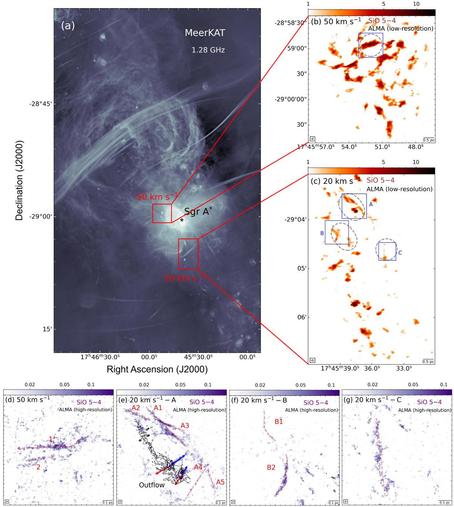ALMA Discovers “Space Tornadoes” Around the Milky Way’s Core!
Although the galaxy’s central molecular zone (CMZ) has long been known to be filled with swirling dust and gas molecules cycling through formation and destruction, the mechanism that drives this process has remained elusive. Molecules serve as tracers for various processes in molecular clouds, with silicon monoxide (SiO) particularly useful in detecting the presence of shock waves.
Using ALMA’s high resolution and sensitivity to map distinct spectral lines within the molecular clouds at the center of the Milky Way, the team led by Kai Yang (Shanghai Jiao Tong University) has delineated a new type of long, narrow filamentary structure at a significantly finer scale. The dynamic interaction between this turbulent environment and the slim filaments produced as shocks ripple through provides a more complete view of the cyclical processes within the CMZ.
Yang’s team reports it remains unknown how these slim filaments initially arise, but shock processes emerge as a likely explanation.
More info at https://www.almaobservatory.org/en/press-releases/alma-discovers-space-tornadoes-around-the-milky-ways-core/
#ALMA #AtacamaLargeMillimeterSubmillimeterArray #AtacamaLargeMillimeterArray #MilkyWay #CMZ #CentralMolecularZone #SgrA* #GalacticCenter


